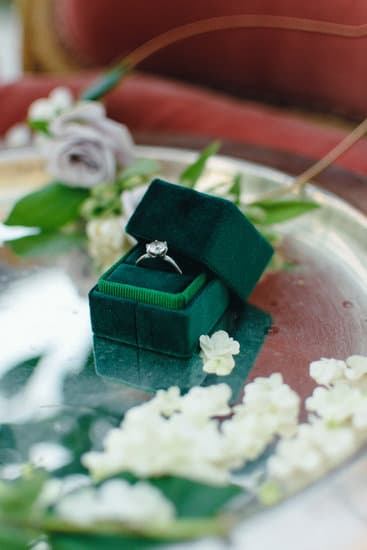Planning a wedding involves many details, and one important aspect is the wedding welcome sign. Brides and grooms want to make sure that their loved ones feel welcomed and informed from the moment they arrive at the venue.
But how big should a wedding welcome sign be to make an impact? In this article, we will explore the significance of a wedding welcome sign, factors to consider when choosing the right size, and how it can impact the overall venue decor.
The wedding welcome sign serves as the first point of contact for guests as they arrive at the venue. It not only provides crucial information such as directions and event schedule but also sets the tone for the celebration. The size of the welcome sign plays a key role in making it noticeable and informative for guests. Therefore, understanding how big should a wedding welcome sign be is essential in creating an inviting and organized atmosphere for your special day.
When it comes to determining the size of a wedding welcome sign, there are various factors to consider. From signage material to outdoor vs. indoor placement, each element can influence the optimal dimensions for maximum impact. In this article, we will delve into these considerations in detail to help you make an informed decision that complements your wedding’s overall aesthetic and practical needs.
Choosing the Right Size
When it comes to choosing the right size for a wedding welcome sign, there are several important factors to consider. One of the first things to think about is the location of the sign. A large outdoor wedding venue may require a bigger sign in order to be visible from a distance, while an indoor wedding may have different size constraints.
Another crucial factor to consider when determining the size of your wedding welcome sign is the overall aesthetic of your wedding venue. You’ll want to make sure that the size of the sign is visually balanced with the space where it will be displayed. A small sign in a large, open area may get lost, while a massive sign in a small, intimate setting could overwhelm the space.
Additionally, it’s important to consider how far away guests will be when they first encounter your welcome sign. If it’s located at a considerable distance from where guests arrive, it will need to be larger in order to be easily read and seen from afar. Keep in mind that readability is key – you want your guests to be able to clearly see and understand the information on your welcome sign without having to squint or get too close.
| Factor | Considerations |
|---|---|
| Location | Indoor vs Outdoor |
| Aesthetics | Visual balance with venue space |
| Distance | Guest visibility and readability |
Signage Material
When considering the size of a wedding welcome sign, it is important to take into account the material from which the sign will be made. The material can have a significant impact on the overall size and visibility of the sign.
For example, if you choose to have a wooden welcome sign, it may need to be larger in order to be easily spotted from a distance. On the other hand, if you opt for a sleek acrylic or metal sign, it may be more visible even at a smaller size.
Another factor to consider is the style and theme of your wedding. If you are having a rustic outdoor wedding, a larger wooden welcome sign may fit in seamlessly with the surroundings. However, for a modern indoor wedding, a smaller and more minimalist acrylic or metal sign may complement the aesthetic better.
Ultimately, the material of your wedding welcome sign should not only affect its size but also its overall design and purpose. It is important to choose a material that aligns with your vision for your wedding and ensures that your welcome sign makes a statement while being visually appealing.
| Material Type | Recommended Size |
|---|---|
| Wooden | Larger for outdoor weddings |
| Acrylic or Metal | May be more visible at a smaller size |
Outdoor vs Indoor Wedding Welcome Signs
When it comes to outdoor vs. indoor wedding welcome signs, the size variation can play a significant role in ensuring that your guests can easily locate and read the sign. For outdoor wedding welcome signs, the size should be larger compared to indoor ones due to the potential distance from which guests will be approaching. Here are some factors to consider when determining how big your outdoor or indoor wedding welcome sign should be:
1. Distance: When deciding on the size of your outdoor wedding welcome sign, take into consideration how far away it will be placed from where guests will be arriving. The further the distance, the larger the sign should be to ensure clear visibility.
2. Environmental Factors: Outdoor wedding welcome signs may need to compete with natural elements such as trees, flowers, or other decor. A larger sign can help it stand out against these surroundings.
3. Indoor Space: In contrast, indoor wedding welcome signs can afford to be slightly smaller since they will likely be placed closer to where guests enter the venue. Consider factors such as ceiling height and available wall space when determining the appropriate size for an indoor sign.
Ultimately, whether you opt for an outdoor or indoor wedding welcome sign, it’s essential to carefully consider how big it should be in order to create a visually appealing and functional element for your special day.
Impact on Overall Venue Decor
When it comes to wedding décor, the welcome sign plays a crucial role in setting the tone for the entire event. The size of the welcome sign will have a significant impact on the overall visual balance of the venue. The key is to ensure that the sign is not too overpowering, but also not so small that it gets lost in the surroundings.
Complementing the Space
One of the most important considerations when determining the size of your wedding welcome sign is how it will complement the space. If you are having a grand, lavish wedding with a larger venue, a bigger welcome sign would be more appropriate. However, for a smaller, intimate setting, a smaller sign may work better to maintain visual harmony.
Coordinating With Other Decor Elements
Another factor to take into account is how the welcome sign fits in with other décor elements at your wedding venue. The size of the sign should be in proportion to other signage and decorative elements present at the entrance or reception area. It should add to the overall aesthetic rather than detract from it.
Balancing Text and Graphics
Beyond just physical size, it’s essential to consider how text and graphics are balanced on the welcome sign. If there are too many words or images crammed onto a small sign, it can appear cluttered and unattractive. Conversely, if there is too much empty space on a large sign, it may look incomplete or underwhelming. Finding that perfect equilibrium takes careful consideration and possibly consulting with a professional designer.
Considering these factors will help you determine just how big your wedding welcome sign should be, ensuring that it adds visual appeal while maintaining balance within your overall venue decor.
Design Elements
When it comes to designing a wedding welcome sign, one of the most important considerations is how to make it stand out and catch the attention of your guests. Here are some key design elements to consider when creating your wedding welcome sign:
Typography
The choice of font and typography can greatly impact the overall look of your welcome sign. Consider using a mix of serif and sans-serif fonts for a modern yet elegant look. Make sure that the text is easy to read from a distance, especially if your wedding venue is large.
Color Scheme
The colors you choose for your welcome sign should complement the overall theme and color palette of your wedding. Bold, eye-catching colors can help the sign stand out, but be sure to avoid clashing with the surroundings or other decor elements.
Personalization
Consider adding personal touches to your welcome sign, such as custom monograms, illustrations, or even a meaningful quote. This can help make the sign feel more unique and reflective of your personalities as a couple.
Ultimately, the goal is to create a wedding welcome sign that not only serves its practical purpose but also adds to the visual appeal of your venue and sets the tone for your special day. By carefully considering these design elements, you can ensure that your wedding welcome sign stands out in all the right ways.
Placement and Visibility
When it comes to wedding welcome signs, one of the most important factors to consider is the placement and visibility of the sign. After all, you want to ensure that your guests can easily find their way and feel welcomed as they arrive at your wedding venue. Here are a few tips for ensuring that your wedding welcome sign is unmissable:
- Consider the height: Depending on the size of your wedding venue entrance, you’ll want to make sure that the sign is placed at a height where it can be easily seen by guests as they arrive. A good rule of thumb is to have the bottom of the sign at eye level.
- Use strategic lighting: If your wedding is taking place in the evening or in a dimly lit area, consider adding some subtle lighting around the welcome sign to make it more visible.
- Directional signage: If your wedding venue is particularly large or has multiple event spaces, consider adding directional signage along with your welcome sign to guide guests to the ceremony or reception areas.
By taking these factors into consideration, you can ensure that your wedding welcome sign is placed in a way that makes it impossible for guests to miss as they arrive at your special day.
Lastly, remember that while you want to ensure your wedding welcome sign is unmissable, you also don’t want it to overpower or detract from the rest of your venue decor. Finding that balance between visibility and visual appeal will ultimately ensure that your guests have a seamless and enjoyable experience from the moment they arrive.
Final Tips and Considerations
In conclusion, when it comes to deciding on the size of your wedding welcome sign, there are several factors to consider. The most important thing is to ensure that the sign is large enough to be easily visible and legible for all of your guests.
Factors such as the distance from where guests will enter the venue and any potential obstructions should also be taken into account. Additionally, consider the overall visual balance of your venue decor and how the size of the sign will impact this.
It’s essential to take into consideration whether your wedding will be held indoors or outdoors, as this can affect how big your welcome sign should be. Outdoor signs may need to be larger in order to stand out against a natural backdrop, whereas indoor signs may not need to be as large due to closer proximity to guests.
Ultimately, the decision on how big your wedding welcome sign should be comes down to what works best for you and your specific wedding venue. Taking all factors into consideration and ensuring that the sign fits seamlessly with your overall design aesthetic will help create a warm and inviting first impression for your guests.
By carefully considering all aspects of signage size, material, design elements, placement, and visibility, you can make an informed decision that sets the perfect tone for your special day.
Frequently Asked Questions
What Size Are Easel Signs?
Easel signs come in various sizes, but the most common ones are around 18×24 inches or 24×36 inches. These sizes provide enough space for the information to be displayed and easily seen from a distance.
What Size Is a Wedding Timeline Sign?
A wedding timeline sign can vary in size depending on the amount of information it needs to display. Typically, these signs are around 18×24 inches to ensure that all the important details of the timeline can be clearly presented without feeling cluttered.
How to Make a Welcome Sign for a Wedding?
Making a welcome sign for a wedding involves choosing the appropriate size and design that fits the overall theme of the event. The sign can be handmade using calligraphy or printed professionally, and it should include a warm greeting and perhaps some decorative elements to make it inviting for guests.

I have been involved in marriages for over 20 years helping couples and singles understand more about them.




![What to Sign on a Wedding Card Best Wishes from [Your Name] and [Partner's Name]](https://www.marriagespirit.com/wp-content/uploads/2024/03/wedding-310-1-150x150.jpg)
